- Clone
- W17077C (See other available formats)
- Regulatory Status
- RUO
- Other Names
- CANX, IP90, Major histocompatibility complex class I antigen-binding protein p88, p90
- Isotype
- Rat IgG2a, κ
- Ave. Rating
- Submit a Review
- Product Citations
- publications
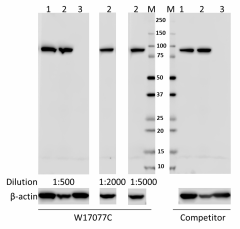
-

Whole cell lysates (15 µg protein) from HeLa (lane 1), HepG2 (lane 2) and NIH3T3 (lane 3) cells were resolved by electrophoresis (4-20% Tris-glycine gel), transferred to nitrocellulose, and probed with 1:500 (1 µg/mL), 1:2000 (0.25 µg/mL) and 1:5000 (0.1 µg/mL) purified anti-Calnexin antibody, clone W17077C or competitor’s antibody used at manufactures recommended concentration. Proteins were visualized using chemiluminescence detection by incubating with 1:3000 dilution of HRP goat anti-rat-IgG secondary antibody (Cat. No. 405405) for clone W17077C or 1:3000 diluted HRP donkey anti-rabbit IgG antibody (Cat. No. 406401) for competitor’s antibody (upper). 1:2000 dilution of Direct-Blot™ HRP anti-β-actin antibody (Cat. No. 643807) was used as a loading control (lower). Lane M: MW ladder. -

HeLa cells were fixed with 4% paraformaldehyde (PFA) for 15 minutes, permeabilized with 0.5% Triton X-100 for 3 minutes, and blocked with 5% FBS for 60 minutes. Then the cells were intracellularly stained with (A) 1:250 (2 µg/ml) purified rat IgG2a, κ isotype control antibody (Cat. No. 400502) or 1:250 (2 µg/ml, B) and 1:1000 (0.5 µg/ml, C) anti-Calnexin antibody (clone W17077C) overnight at 4°C followed by Alexa Fluor® 488 (green) conjugated goat anti-rat IgG (Cat. No. 405418) for one hour at room temperature. Nuclei were counterstained with DAPI (blue). The image was captured with a 60X objective.
| Cat # | Size | Price | Quantity Check Availability | Save | ||
|---|---|---|---|---|---|---|
| 699401 | 25 µg | £70 | ||||
| 699402 | 100 µg | £174 | ||||
Calnexin is a type I integral ER transmembrane chaperone that interacts with the oligosaccharide Glc1Man9GlcNAc2 on the glycoproteins and possesses binding sites for ATP and calcium. Together with its soluble homolog calreticulin and the thiol oxidoreductase ERp57, calnexin was found to participate in the folding and quality control of newly synthesized N-linked glycoproteins. Calnexin has calcium-binding capacity and is involved in the regulation of calcium homeostasis. The potential calnexin binding substrates include MHC class I molecules, ion channel proteins, and the cystic fibrosis transmembrane conductance regulator (CFTR). Mutations on calnexin have been implicated in several coagulation disorders and cystic fibrosis. Calnexin-deficient mice exhibit severe motor problems and growth defects.
Product DetailsProduct Details
- Verified Reactivity
- Human
- Antibody Type
- Monoclonal
- Host Species
- Rat
- Immunogen
- Human Calnexin recombinant protein (161-410 a.a.) expressed in E. coli.
- Formulation
- Phosphate-buffered solution, pH 7.2, containing 0.09% sodium azide.
- Preparation
- The antibody was purified by affinity chromatography.
- Concentration
- 0.5 mg/ml
- Storage & Handling
- The antibody solution should be stored undiluted between 2°C and 8°C.
- Application
-
WB - Quality tested
ICC - Verified - Recommended Usage
-
Each lot of this antibody is quality control tested by Western blotting. For Western blotting, the suggested use of this reagent is 0.1 - 1.0 µg per ml (1:500-1:5000 diluted). For immunocytochemistry, a concentration range of 0.5 - 2.0 μg/ml (1:250-1:1000 dilution) is recommended. It is recommended that the reagent be titrated for optimal performance for each application.
- Application Notes
-
The apparent molecular weight of Calnexin may differ based on the gel system used: in Tris-Glycine gels, a molecular weight of ~90 kDa was observed by WB testing, while in Bis-Tris gels an apparent molecular weight of ~75 kDa was observed.
- Product Citations
-
- RRID
-
AB_2728519 (BioLegend Cat. No. 699401)
AB_2728519 (BioLegend Cat. No. 699402)
Antigen Details
- Structure
- 592 amino acids with a predicted molecular weight of 67.6 kD. Type I transmembrane protein. Contains an N-terminal ER lumenal domain and a C-terminal cytoplasmic domain.
- Distribution
-
Endoplasmic reticulum membrane.
- Function
- Calnexin is an ER transmembrane chaperone protein and functions in the folding of newly synthesized glycoprotein and quality control of misfolded proteins.
- Interaction
- Interacts with MAPK3/ERK1, KCNH2, SGIP1, SERPINA2P/SERPINA2, PPIB, and ZNRF4.
- Biology Area
- Cell Biology
- Antigen References
-
- Lamriben L, et al. 2016. Traffic. 17:308.
- Kuang XL, et al. 2014. J. Neurosci. Res. 92:1319.
- Lederkremer GZ. 2009. Curr. Opin. Struct. Biol. 515-23.
- Beauregard PB, et al. 2009. J. Cell Sci. 122:1342.
- Rosser MF, et al. 2008. Mol. Biol. Cell. 4570-9.
- Caramelo JJ, Parodi AJ. 2008. J. Biol. Chem. 283:10221.
- Gene ID
- 821 View all products for this Gene ID
- UniProt
- View information about Calnexin on UniProt.org
Related FAQs
Other Formats
View All Calnexin Reagents Request Custom Conjugation| Description | Clone | Applications |
|---|---|---|
| Purified anti-Calnexin | W17077C | WB,ICC |
Customers Also Purchased
Compare Data Across All Formats
This data display is provided for general comparisons between formats.
Your actual data may vary due to variations in samples, target cells, instruments and their settings, staining conditions, and other factors.
If you need assistance with selecting the best format contact our expert technical support team.
 Login / Register
Login / Register 





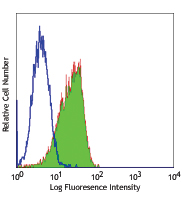
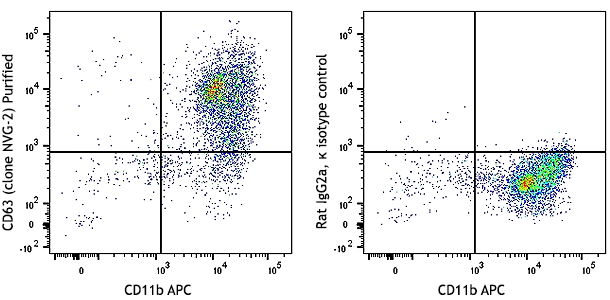
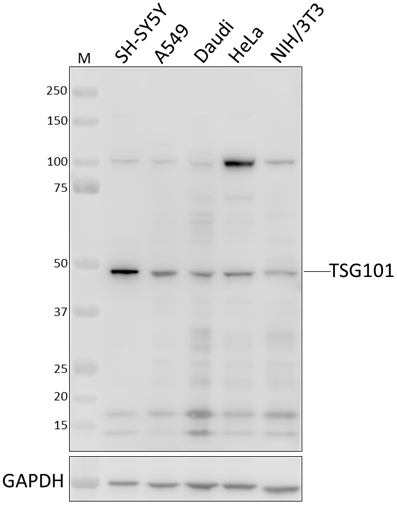
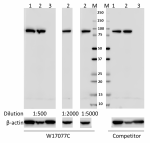
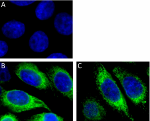



Follow Us